A couple of weeks ago I had an irritant breakout reaction from testing a product, and I posted about it on Instagram. I’m still not 100% sure which product it was, but I used an anti-breakout routine that flattened my pimples in about 24 hours, and they were almost completely gone in around 3 days. I had a lot of requests to share my routine, and so here it is!
What sort of breakout is it?
First you need to work out the sort of breakout it is. And even before that, you need to sort out whether it’s purging or a breakout. Check out this post on purging vs breakouts first to see if it’s a good purge or a bad breakout.
Within breakouts, there are two main types: when a product clogs your pores, and when a product irritates your skin. If you’re unlucky, a product can do both, but if it’s just doing one then it’s a lot easier to fix.
Pore clogging breakouts:
- Happen from comedogenic products
- Usually from ingredients higher in the ingredient list, or a combination of ingredients
- Tend to happen more slowly (appear after a few days)
- Usually start with whiteheads (clogged pores – fleshy bumps under the skin), especially in areas where you usually get pimples (chin, forehead)
Irritant breakouts:
- Happen with irritating products
- Usually from ingredients low in the ingredient list, or an ingredient at a higher concentration than normal, or if combined with a penetration enhancing ingredient
- Tend to happen very quickly
- Usually give red, shallow pimples very quickly, often happen in areas where you don’t get pimples that often
Related Post: Video: Is My Skin Purging or Breaking Out?
Mine was clearly an irritant breakout. A whole flock of pimples appeared overnight. My pimples were very red and shallow with pus very close to the surface, and they went from zero to squeezable in less than 24 hours. They were also inflamed with the redness extending well away from the pus spots. I had pimples in places where I never got pimples, like on the side of my nose where the nosepads of glasses would normally sit, and between my nose and upper lip.
My Anti-Breakout Routine
Avoid irritants
For clearing up any breakouts, the best thing to do is to undo whatever caused it. Obviously, you need to stop using the product immediately. If you’re not sure which product caused the breakout, if you didn’t introduce your products one by one like you’re meant to (um yeah, I made that classic mistake this time…) then you should stop all the new ones.
Hopefully you have a “safe” cleanser, sunscreen and moisturiser on hand that you know your skin is OK with. They’re probably boring and not fancy and have short ingredients lists, but now is not the time for fancy. Preferably you want fragrance-free – even if your skin can normally handle fragrance, it’s best to avoid all irritants while your face is irritated, since it could react to things you’re normally fine with. Your cleanser should be as bland and boring as possible, preferably free of soap and SLS.
Related post: All About Cleansing & How to Choose a Gentle Cleanser
Use anti-irritants and gentle exfoliants
This next step requires a bit of caution. In addition to your usual routine, you might also want to add some actives in: anti-irritants and anti-inflammatories to help your skin calm down, and gentle exfoliants to clear out clogged pores. Unfortunately these actives can also cause more irritation if you’re not careful, hence the emphasis on gentle. A lot of anti-irrntants are also botanical, and in general botanicals have a higher change of being irritating since they contain a wide range of chemicals, grow microbes and go off more easily, and are more variable in their composition.
The best ingredient to use at this stage in my opinion is salicylic acid, also known as BHA (beta hydroxy acid). Salicylic acid is an exfoliant, and it’s anti-irritant (it’s a form of aspirin, an antiinflammatory drug), so it’s a multitasker, and multitaskers are nice at this point because we want to reduce the number of products we subject our poor inflamed skin to. It’s also effective at higher pH than AHAs – because it’s oil soluble, the free acid amount is less important and the ionised version will still penetrate into the skin, so you can avoid another source of irritation here.
Related post: Video: Why pH matters for AHAs and acids in skincare
Other helpful ingredients:
- Anti-irritants / anti-inflammatories: niacinamide, oatmeal extract, chamomile,
- Exfoliants: I’d recommend chemical exfoliants over physical exfoliants for breakouts. Glycolic acid, lactic acid, mandelic acid, malic acid. I would go for the other AHAs over glycolic acid at this stage, since glycolic acid’s small size makes it more likely to irritate, although it depends on the formula of the product as well. You can also use very gentle physical exfoliation, like a peeling gel or a konjac sponge, but I personally don’t risk it, and I’m usually a big fan of physical exfoliation (more info in my Guide to Exfoliation)
Hydrocolloid bandages are always handy for flattening bumps. They’re particularly good for big, shallow pimples, which is exactly what I had.
Related post: How Do Hydrocolloid Bandages and Acne Patches Work?
Anti-Breakout Products
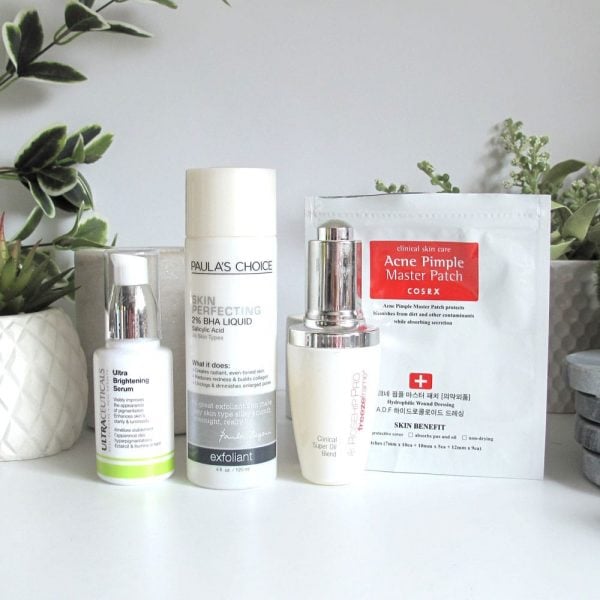
Here’s the actual routine I used:
Cleanser: I’m generally pretty lucky with cleansers and I haven’t had one break me out yet, so I used my usual Shu Uemura Cleansing Oil and KraveBeauty Matcha Hemp Hydrating Cleanser.
Salicylic acid: Paula’s Choice 2% BHA Liquid, which I’ve used for almost 10 years with no issues.
AHA chemical exfoliant: Ultraceuticals Ultra Brightening Serum. This is a little strong and stingy, so I used this very sparingly.
Moisturiser: Stratia Liquid Gold (which also has niacinamide) and rosehip oil. Moisturisers are often pore-clogging for me, so I went with two that I knew worked for me.
Sunscreen: Ultraceuticals Ultra Protective Daily Moisturiser SPF 30+, since it’s a safe product for me (even though I have a giant backlog of sunscreens to trial!).
Hydrocolloid bandages: Cosrx Acne Pimple Master Patch
Other notes
Don’t squeeze too much! Squeezing is irritating, so ideally you wouldn’t squeeze at all, but I know strict abstinence is impossible for most people, so I’m going for a harm reduction approach here.
Change your pillowcase, towels etc.: Just to be on the safe side
If you want to check which product caused the reaction, I’d recommend applying it to part of your face only the next time, so you have a comparison.
I usually go for benzoyl peroxide as an acne spot treatment, but it’s quite irritating so I avoid it for irritant breakouts.
What’s your go-to treatment for breakouts?
Some products were provided for editorial consideration, but this is my honest opinion. This post also contains affiliate links – if you decide to click through and support Lab Muffin financially (at no extra cost to you), thank you! For more information, see Disclosure Policy.


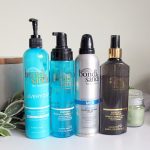
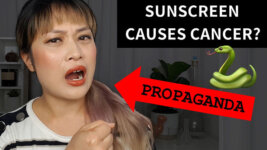
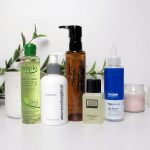
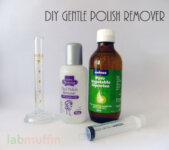
“Salicylic acid is an … anti-irritant”? What? But it stings so much, even at very low percentages! (I use it a LOT, as a daily toner and as an acid peel once a week). (I use it at 10% as a toner and 40% as a peel, but even 2% pimple cream stings!) Are you saying that the stngíng I’m feeling ISN’T from irritation? (My face also turns light-to-bright pink during the stinging, but the pink goes at the same moment the stinging does.) If it’s not, in fact, irritating me, then what does the stinging indicate?
I’m gonna be on tenterhooks awaiting your answer! I’ve also ought stinging = irritation.
Thanks for the heads-up, and good luck with the outbreaks! I now have “mature skin,” and don’t experience them anymore unless I use a product with fragrance. (Why, oh, why do companies feel we need to perfume our faces? If I DID want to, I’d use a fragrance that doesn’t clash with my cologne!)
Hey Binky,
I know I’m not Michelle but I feel like if you know sooner rather than later your skin will finally be getting some relief
But from what you’ve written it sounds like your skin has a mild chemical burn from over exfoliation, especially because your skin is showing clear warning signs of irritation and inflammation (the pink colour and stinging). Obviously you need to double check your symptoms but I’ve had a similar experience before). I believe Michelle has a post on over exfoliation that should help you, or a video but I think it was a post.
Especially if you’re toner is 10% salicylic Acid specifically that you’re using daily, and on top of that you’re doing a peel once a week, you’re effectively stripping away your top epidermis layer very harshly.
Salicylic Acid is definitely not an irritant unless you’re allergic to it.
I hope this has helped and that you can find some more information on this, and that your skin feels better soon.
Great advice! 🙂
More specifically I should’ve said it was an anti-inflammatory (if it’s low pH it’ll be irritating since low pH itself is an irritant) – it’s an analogue of acetylsalicylic acid aka aspirin, which is a non-steroidal anti-inflammatory drug 🙂
“Salicylic acid is an … anti-irritant”? What? But it stings so much, even at very low percentages! (I use it a LOT, as a daily toner and as an acid peel once a week). (I use it at 10% as a toner and 40% as a peel, but even 2% pimple cream stings!) Are you saying that the stngíng I’m feeling ISN’T from irritation? (My face also turns light-to-bright pink during the stinging, but the pink goes at the same moment the stinging does.) If it’s not, in fact, irritating me, then what does the stinging indicate?
I’m gonna be on tenterhooks awaiting your answer! I’ve also ought stinging = irritation.
Thanks for the heads-up, and good luck with the outbreaks! I now have “mature skin,” and don’t experience them anymore unless I use a product with fragrance. (Why, oh, why do companies feel we need to perfume our faces? If I DID want to, I’d use a fragrance that doesn’t clash with my cologne!)
Binky
(I’m sorry f this is a double-post; after posting, I didn’t get any sort of message indicating that the post happened, so I used the “back” button to try again. If I still don’t get a message telling me of a successful post, I’ll give up and forever be haunted by the “SA is an anti-irritant” thing!)
Great tips – I usually use salicylic acid and niacinamide to counter my breakouts (and I’m a huge fan of keeping glycolic and lactic acid in my regular rotation). I’ve heard a lot about hydrocolloid bandages but haven’t tried them myself. I’m thinking it might be time to step my pimple-fighting game up a little bit.
Do you think these steps are also effective for hormonal breakouts? Those are the ones that are the most frustrating to me because I know there’s nothing I can do to prevent them. Anecdotally I do find them more persistent than reactive breakouts, but I don’t know if that’s just me or if there’s something else I could be doing to treat them.
The Cosrx pimple patches are magic. I wish I could get ones big enough to do my whole nose. I’m tempted to stick a blister bandage on ?
There’s a study where they did that to treat eczema! Just a full face hydrocolloid for like 4 days…
Hey Michelle, did you recently add advertisements to your blog? Just wondering because I felt like I never saw them before.
I recently changed ad providers and I’m still trying to find the right ad density to be not annoying but still cover my costs… it’s still a work in progress obviously!
thanks for telling me, I was just curious! Wonder how I didn’t notice them before lol
I can’t use salicylic acid. It breaks me out every time I try it in a leave-on form. I’ve had peels done that were salicylic and glycolic acids that were removed after several minutes with no issues. I wish I could use it…it’s in so many products.
How annoying! It’s been such a handy ingredient for me. Maybe you can use separate exfoliant and anti-inflammatory for the same result…
Hey, Charmingly Knowledgeable Lady!
My go-to treatments are:
My holy cleanser trinity: Balance Me Pure Skin Face Wash, Medik8 Beta Cleanse with bha, niacinamide, mandelic acid, chlorhexidine gluconate, tea tree oil or PoreCleanse Gel with mandelic acid, bha, lactic acid, yogurt extract, mangosteen peel extract and raspberry fruit extract. All of these cleaners thoroughly cleanse the skin without stripping, calm and reduce blemishes and I must they also brighten my skin.
My favourite liquid/pad exfoliants are Skinceuticals Blemish + Age Solution, Neostrata Gel Plus Salicylic (15% aha + 2% bha) and Neostrata Smooth Surface Daily Peel with 10% aha. These are the only pads I’ve liked so far. Other pads I’ve tried were sort of dry half way through. The Neostrata pads are actually a set of dry pads and aha liquid to be poured into a pot with the pads.
Before I use my favourite treatment (Skinoren 20% azelaic acid), I always use oil-free hyaluronic acid + panthenol serum without silicones. When I was a kid my granny used to use panthenol on me when I had eczema. It helped me with regeneration and healing and no itching. My skin drinks the hyaluronic acid + panthenol serum like me wine. I’m really impressed with azelaic acid. Some of my huge red bumps are gone or are much smaller next morning. And it also helps fade the appearance of my red marks and refine my pores on my nose. And my derm says that it has antioxidant benefits. If I have really big bumps I also use 5% or 10% benzoyl peroxide with azelaic acid.
When I use azelaic acid, I have to use a serum with silicones. I’ve tried to use silicone-free serum, but it’s impossible to use after the 20% azelaic acid. My go-to serum is Medik Blemish oil-free antioxidant serum with copper pca, beta-glucan, niacinamide, rosemary extract and ginseng/portulaca/centella extracts.
I use NeoStrata Sheer Physical Protection SPF 50 and to cover spots the Oxygenetix Acne Control Foundation with 2% bha as a concealer. I’ve tried several concealers but it’s impossible to find one that doesn’t smudge due to perspiration or humidity. The Oxygenetix is also water and transfer resistant (swim up to 90 minutes) and has SPF 25 UVA/UVB protection.
Azelaic acid sounds amazing – I wish we had a more cosmetically elegant one easily available in Australia!
Not sure whether you can get them in Australia, but Ducray (pierre fabre-avene) makes two lovely products with azelaic acid with a bit of aha. one for pigmentation melascreen emulsion (12% azelaic + 3% aha) and keracnyl serum for adult acne (azelaic acid, niacinamide, monolaurin + aha). they are much better than the ordinary’s azelaic.
I can’t remember the last time I had irritant breakouts (knock on wood), but I get the pore clogging ones more often, usually from testing new products. How would you treat them? I tend to go for a similar approach with them, but add some zinc for driying the spot out.
Hi Michelle! Thanks for the great advice, as usual. Question, I’ve been loving and using salycilic acid for years to keep my hormonal acne at bay. However I read on the “ordinary” website that it’s not good for the long term treatment of acne. They recommend niacinamide. I’m afraid to switch over because of what may happen. What are you me thoughts?
I’ve heard that from them, but they’ve never provided any good reasoning or evidence for their assertion! There are a few things that Deciem say that aren’t backed scientifically, so I think it’s just a personal preference from them.
Thanks for the reply. Do you have any experience with using niacinamide alone for acne maintenance? Thanks again!
Hi Michelle,
great article! I’ve started using salicylic about a two weeks ago so still at the stage where I am observing how my skin reacts. So far I’m seeing maybe some slight improvements with whiteheads on my chin.
I was wondering – do you apply it with the prerequisite cotton round? As I ran out of those I’ve just been dabbing it on with a clean fingertip.
Thanks!
Leah
I’ve been using my fingers for salicylic acid 🙂
Hi, Michelle! This guide is really helpful. I’m glad you shared this. I wear prescription glasses, and recently as I was trying a new moisturizer, I had pimples sprouting on the sides of my nose where the nosepads usually sit, just as you mentioned. So I can attest to how troublesome that can be. The timing of this is uncanny. 😉
How annoying! Hope your skin is feeling better!
Hi Michelle, thanks for another great post!
Something I’ve always wondered about – if the skin renewal cycle is 6-8 weeks, why do we get breakouts from bad products overnight?
It’s usually irritation and inflammation!